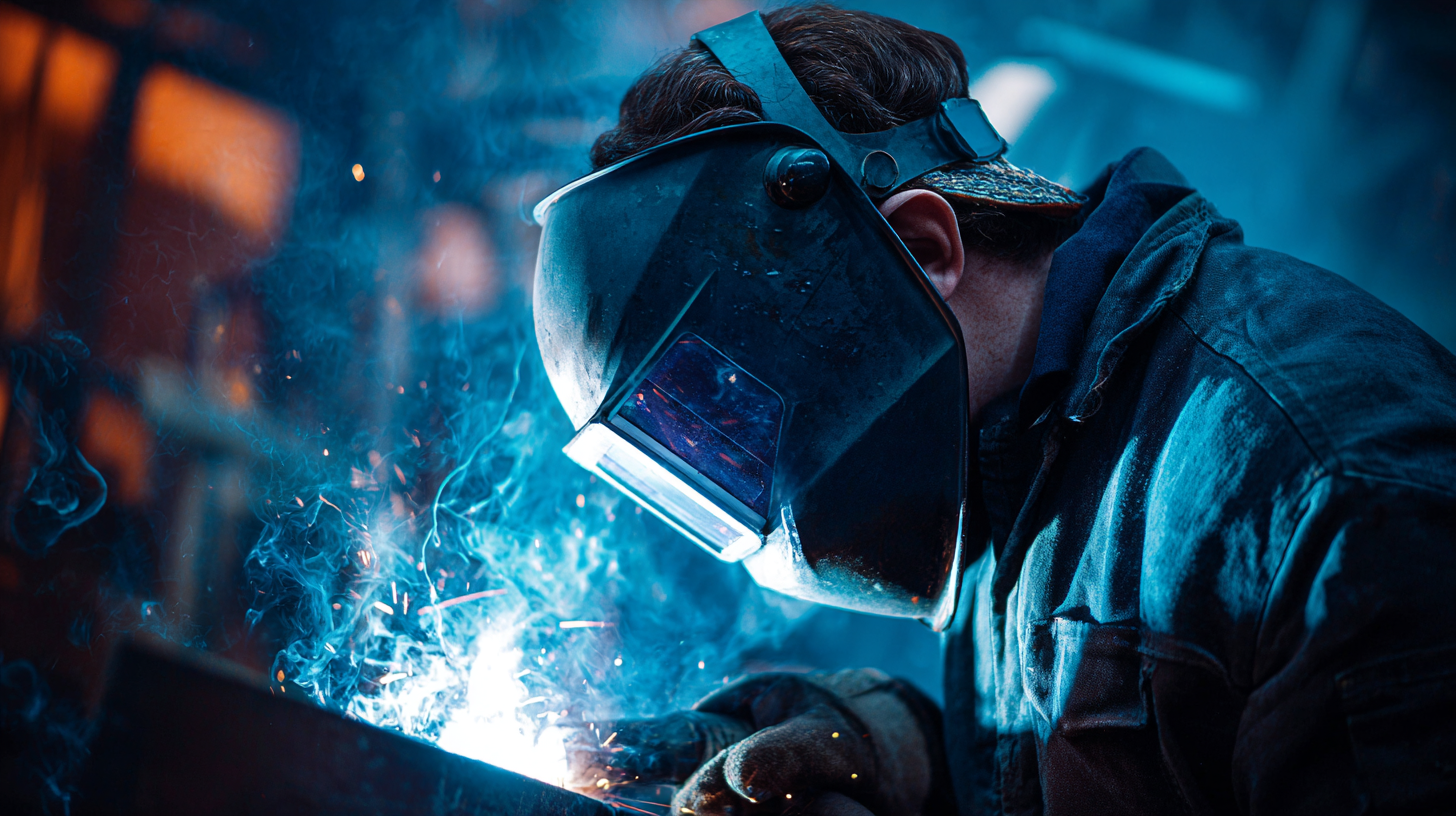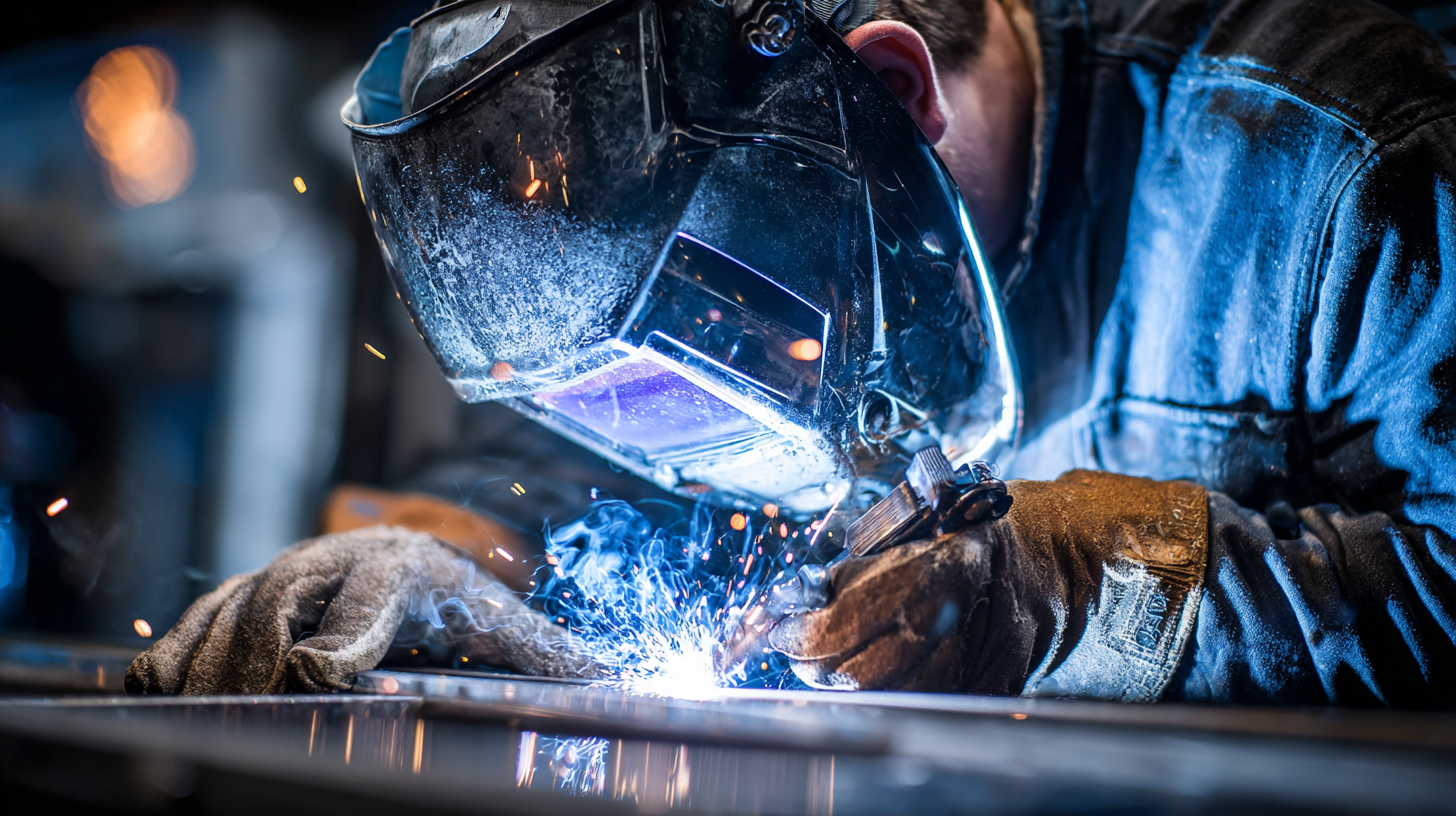- About
- Welders
- - Automation
- - Bench Welders
- - Capacitor Discharge Welders
- - Custom Resistance Welders
- - Diffusion Welding
- - Metal Door and Frame Welders
- - MFDC Welding
- - Multi-Gun Welders
- - Press Type Welders
- - Rocker Arm Spot Welders
- - Seam Welders
- - Spot Welding Guns
- - Turntable Welders
- - Used Welders and Equipment
- - XY Welders
- Blog
- TECNA
- Fastener Welding
- Supplies
- Services
- Resources
- Contact
The Ultimate Guide to Understanding Metal Welding Techniques for Beginners
 Metal welding is a foundational skill in various industries, from automotive to construction, and is vital for creating strong and durable structures. For beginners eager to delve into the world of metal welding, understanding the diverse techniques available can seem overwhelming.
This ultimate guide aims to demystify the essential welding techniques, providing clear explanations and step-by-step instructions tailored for novices. Whether you are looking to embark on a DIY project or pursue a career in welding, mastering these techniques will empower you to join metals effectively and safely.
Through this comprehensive exploration, you'll gain confidence and competence in metal welding, paving the way for your creative and professional endeavors in this exciting field. Prepare to unlock the secrets of metal welding and enhance your skills with this indispensable resource.
Metal welding is a foundational skill in various industries, from automotive to construction, and is vital for creating strong and durable structures. For beginners eager to delve into the world of metal welding, understanding the diverse techniques available can seem overwhelming.
This ultimate guide aims to demystify the essential welding techniques, providing clear explanations and step-by-step instructions tailored for novices. Whether you are looking to embark on a DIY project or pursue a career in welding, mastering these techniques will empower you to join metals effectively and safely.
Through this comprehensive exploration, you'll gain confidence and competence in metal welding, paving the way for your creative and professional endeavors in this exciting field. Prepare to unlock the secrets of metal welding and enhance your skills with this indispensable resource.
Types of Metal Welding Techniques Explained for Beginners
When venturing into the world of metal welding, beginners often encounter various techniques that each serve unique purposes. The two most common types are MIG (Metal Inert Gas) welding and TIG (Tungsten Inert Gas) welding. MIG welding is especially favored for its speed and ease of use, making it ideal for beginners. It utilizes a continuous wire feed and a shielding gas to protect the weld from contamination, allowing for quick and efficient work on thicker materials.
On the other hand, TIG welding is renowned for producing high-quality, precise welds. This method involves a non-consumable tungsten electrode and requires a steady hand, making it more challenging for starters. However, mastering TIG welding can be incredibly rewarding, as it offers greater control over the welding process, particularly for intricate or thin materials.
Tips: Before diving into any welding project, always practice on scrap metal to hone your skills. Additionally, invest time in understanding the safety precautions. Wearing the right protective gear and ensuring proper ventilation can make a substantial difference in your welding experience. Lastly, don’t hesitate to reach out to experienced welders for guidance; their insights can be invaluable as you develop your welding abilities.
The Ultimate Guide to Understanding Metal Welding Techniques for Beginners
| Welding Technique | Description | Common Uses | Skill Level |
|---|---|---|---|
| MIG Welding | A process that uses a continuous wire feed as an electrode. | Automotive repairs, metal fabrication. | Beginner-friendly |
| TIG Welding | Uses a non-consumable tungsten electrode to produce the weld. | Aerospace, art sculptures. | Intermediate |
| Stick Welding | Involves using a consumable electrode coated in flux. | Construction, heavy equipment repair. | Beginner |
| Flux-Cored Arc Welding (FCAW) | Similar to MIG but uses a tubular wire filled with flux. | Construction, shipbuilding. | Intermediate |
| Submerged Arc Welding (SAW) | Welding process that uses an arc formed between a continuously fed electrode and the workpiece. | Heavy steel constructions, pipelines. | Advanced |
Understanding the Basics of Shielded Metal Arc Welding (SMAW)
Shielded Metal Arc Welding (SMAW), commonly known as stick welding, is one of the most fundamental welding techniques, making it an excellent starting point for beginners. This process involves the use of a consumable electrode coated in a flux, which melts to protect the weld from contamination. SMAW is versatile, capable of welding various metals like steel and iron, making it a popular choice in construction and repair work.
Tip: Always ensure you have the proper personal protective equipment (PPE), including a welding helmet, gloves, and appropriate clothing. This will protect you from harmful radiation and sparks during the welding process.
As you master SMAW, pay attention to the angle and speed of your electrode. A proper angle helps to create a quality weld bead, while maintaining a consistent speed ensures uniform heat distribution. It's essential to practice on scrap pieces of metal to refine your technique before moving on to your primary projects.
Tip: Start with shorter welds and gradually increase the length as you gain confidence. This will help you manage heat distortion and improve your overall control of the welding process.
Exploring Gas Metal Arc Welding (GMAW) and Its Applications
 Gas Metal Arc Welding (GMAW), commonly known as MIG welding, is a versatile and widely used welding technique that employs a continuous wire feed as an electrode. This process is characterized by its ability to weld a variety of materials, including steel, aluminum, and other non-ferrous metals. GMAW utilizes a shielding gas, typically argon or a mixture of argon and carbon dioxide, to protect the molten weld pool from atmospheric contamination, ensuring a clean and strong weld. This combination of features makes GMAW particularly appealing for both beginners and experienced welders alike.
Gas Metal Arc Welding (GMAW), commonly known as MIG welding, is a versatile and widely used welding technique that employs a continuous wire feed as an electrode. This process is characterized by its ability to weld a variety of materials, including steel, aluminum, and other non-ferrous metals. GMAW utilizes a shielding gas, typically argon or a mixture of argon and carbon dioxide, to protect the molten weld pool from atmospheric contamination, ensuring a clean and strong weld. This combination of features makes GMAW particularly appealing for both beginners and experienced welders alike.
One of the primary applications of GMAW is in the automotive and manufacturing industries, where its speed and efficiency can significantly reduce production time. Additionally, GMAW is favored for its relative ease of use, allowing beginners to quickly grasp the fundamentals of welding. The process is ideal for thin materials, making it a popular choice for fabricating light structures and components. As beginners explore GMAW, they discover not only its practical applications but also its potential for artistic endeavors, such as creating sculptures and intricate designs in metalwork.
A Beginner's Guide to Flux-Cored Arc Welding (FCAW)
Flux-Cored Arc Welding (FCAW) is an ideal technique for beginners looking to dive into the world of welding. This process involves feeding a continuous wire electrode through a welding gun, which creates an arc between the wire and the base material. The benefit of FCAW lies in its versatility; it can be performed with or without shielding gas, making it suitable for outdoor applications where wind might disperse gas. Additionally, FCAW is renowned for its speed and efficiency, allowing new welders to produce strong, high-quality welds quickly.
When selecting a welder for FCAW, it's important to consider user-friendly options that facilitate a smooth learning curve. For instance, certain models are equipped with features that adjust settings automatically, which can help beginners focus on mastering their technique rather than becoming overwhelmed by equipment complexities. Moreover, an understanding of maintenance and safety practices is essential for any beginner venturing into welding, ensuring that each project is not only effective but also safe. With the right guidance and equipment, beginners can successfully navigate the fundamentals of FCAW and develop their skills in metal welding.
Comparative Analysis of TIG Welding vs. MIG Welding Techniques
When it comes to welding techniques, TIG (Tungsten Inert Gas) welding and MIG (Metal Inert Gas) welding represent two of the most popular methods used in the industry, each with its own unique set of characteristics and applications. TIG welding is often favored for its precision, allowing for greater control over the weld bead, making it ideal for thin materials and intricate designs. This method utilizes a non-consumable tungsten electrode to produce the weld, and an inert gas shield protects the weld area from contamination. As a result, TIG welding is particularly suitable for projects requiring high-quality finishes, such as in aerospace and automotive industries.

On the other hand, MIG welding is known for its speed and efficiency, making it a preferred choice for many beginners and large-scale manufacturing processes. This technique uses a continuous feed of a consumable wire electrode, allowing for a quicker welding process compared to TIG. MIG welding is versatile, effective on a variety of materials, and requires less skill initially, making it more accessible to newcomers in the welding field. Moreover, the ease of use has contributed to a robust market for welding consumables, projected to see significant growth in the coming years, which underscores the rising demand for effective welding techniques in various sectors.
Related Posts
-

Exploring the Future of Weld Nuts at the 138th Canton Fair 2025: Trends and Opportunities in Manufacturing
-

Exploring the Future of Industrial Chillers at the 138th Canton Fair 2025: Trends and Innovations
-

Understanding the Benefits of Using a Recirculating Water Chiller in Modern Cooling Systems
-

Understanding the Efficiency of Air Cooled Water Chillers in Modern HVAC Systems
-

How to Select the Right Industrial Chiller for Your Business Needs
-

Innovative Chillers Revolutionizing Temperature Control in Modern Industries
